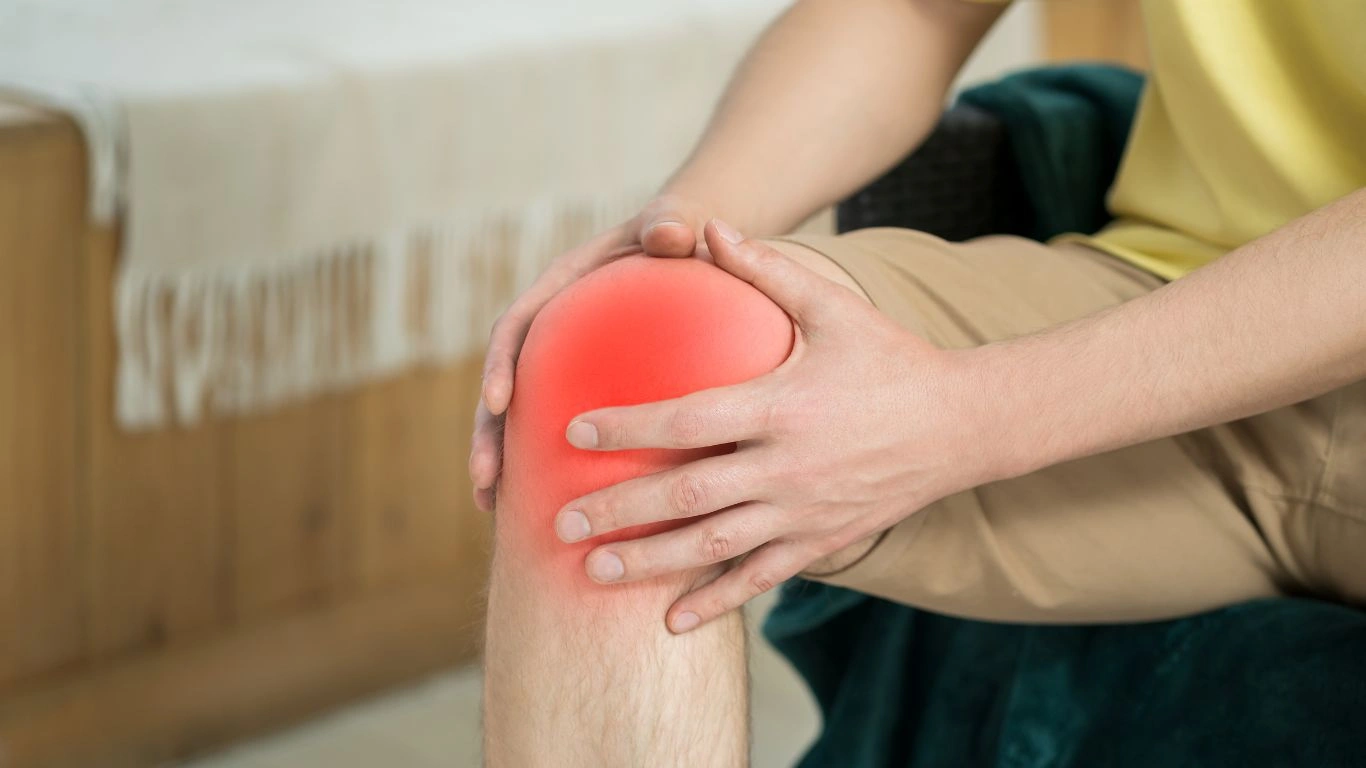Prevent Muscle Wasting with Effective Rheumatoid Arthritis Solutions
As a Rheumatology Nurse Practitioner, I’ve seen firsthand the challenges that patients with rheumatoid arthritis (RA) face—not just in terms of pain and joint inflammation, but also in managing the secondary complications, such as muscle wasting. The impact of muscle wasting on people with RA is often underestimated, but it can significantly affect quality of life, making everyday tasks harder and leading to more severe mobility issues over time. If you’re dealing with RA, or if you’re supporting someone who is, preventing muscle wasting should be a top priority. In this article, I’m going to explore the importance of muscle health in rheumatoid arthritis and share some practical strategies for prevention.
The Link Between Rheumatoid Arthritis and Muscle Wasting

Muscle wasting, also known as muscle atrophy, is a common but often overlooked consequence of rheumatoid arthritis. When you think about RA, you might immediately picture swollen joints, pain, and stiffness—but it’s important to understand that RA can also lead to a loss of muscle mass, which can have long-term effects on strength and mobility. This muscle loss isn’t just caused by reduced physical activity due to joint pain; it’s also a direct result of the inflammatory processes occurring in the body.
In people with RA, the immune system mistakenly attacks healthy tissues, which can lead to chronic inflammation. This inflammation doesn’t just affect the joints; it can also damage muscles, leading to weakness and a gradual loss of muscle mass. Additionally, medications used to manage RA, like corticosteroids, can further contribute to muscle weakening. The combination of these factors makes it even more crucial to take steps to prevent muscle wasting.
Why Preventing Muscle Wasting in RA is Crucial
If you’re living with rheumatoid arthritis, you might already know that this disease doesn’t just affect your joints—it can touch almost every part of your body. Muscle wasting is one of those “silent” symptoms that doesn’t always get the attention it deserves. But it’s a game-changer when it comes to maintaining independence and quality of life. Here’s why preventing muscle wasting should be a priority:
- Improved Mobility: When muscle mass is preserved, it makes movement easier and more fluid. This can make a huge difference when you’re navigating daily activities like walking, lifting objects, or even getting out of bed.
- Enhanced Strength: Keeping your muscles strong helps support your joints. With RA, your joints are already under strain, so building and maintaining muscle mass can take some of that load off and reduce the likelihood of further damage.
- Better Overall Health: Strong muscles help support your bones and prevent falls. If you’re dealing with RA and muscle wasting, it’s even more important to maintain a robust physical state to avoid complications like fractures or joint injuries.
How RA Triggers Muscle Wasting

So, what’s actually happening in your body when RA causes muscle wasting? The answer lies in the chronic inflammation that comes with this autoimmune disorder. Chronic inflammation triggers a cascade of reactions that can damage muscles in several ways. For instance, inflammatory cytokines—small proteins that signal the immune system—are elevated in people with RA. These cytokines can directly interfere with muscle cells, causing them to break down faster than they can regenerate.
Another contributing factor is the effect of RA on the nervous system. When inflammation affects the nerves that communicate with your muscles, it can lead to muscle weakness and atrophy. This is why RA patients often experience a combination of joint pain, stiffness, and muscle weakness, which can feel like a never-ending cycle.
In addition to inflammation, the medications used to manage RA can also play a role in muscle wasting. Corticosteroids, while effective at reducing inflammation, can lead to muscle loss if used long-term. Steroid use is often necessary for managing flare-ups, but it’s important to balance their benefits with their potential side effects.
How to Detect Muscle Wasting Early
While muscle wasting can sometimes be subtle, there are a few signs to look out for. Detecting muscle loss early on can give you the best chance to intervene and slow down the progression. Some signs that muscle wasting might be occurring include:
- Increased Fatigue: If you notice that you’re feeling more tired than usual, even after getting a full night’s sleep, it could be due to muscle weakness.
- Difficulty Performing Everyday Tasks: Struggling with activities you used to do with ease—like carrying groceries, climbing stairs, or even standing up from a chair—may indicate muscle wasting.
- Visible Muscle Shrinkage: Over time, you might notice that certain muscles appear smaller or less defined. This is a clear sign that muscle loss is happening.
- Loss of Strength: If your grip strength or overall physical strength has diminished, it could be linked to muscle wasting.
If you’re experiencing any of these symptoms, it’s important to talk to your doctor or a physical therapist who can assess your muscle health and help you create a plan to address the issue.
Strategies for Preventing Muscle Wasting in RA

Now that we understand how RA can lead to muscle wasting, let’s talk about what you can do to prevent it. While the process may seem overwhelming, there are several steps you can take to help preserve your muscle mass and keep your body strong and functional.
Incorporating Exercise for Muscle Maintenance

Exercise might sound like the last thing you’d want to do if you’re already dealing with joint pain from rheumatoid arthritis, but hear me out—it’s one of the most effective ways to combat muscle wasting. I’ve worked with many patients who initially felt
Nutrition: Fueling Your Body to Prevent Muscle Wasting

When we think about muscle health and RA, we often focus on exercise and physical therapy, but there’s another essential aspect to consider: nutrition. As someone who works closely with patients in managing RA, I can tell you that a balanced diet can make a huge difference in preventing muscle wasting. Proper nutrition supports your muscles by providing the essential building blocks they need to maintain strength and function.
One of the key components of a muscle-preserving diet is protein. Protein plays a significant role in muscle repair and growth, which is especially important for RA patients who may already be experiencing muscle loss due to inflammation. If you’re not getting enough protein, your body might struggle to maintain and rebuild muscle tissue. But it’s not just about the amount of protein—it’s also about the quality. Lean proteins like chicken, fish, eggs, and plant-based sources such as beans, lentils, and tofu are excellent choices.
Additionally, don’t forget about the importance of omega-3 fatty acids. These healthy fats, found in foods like fatty fish, walnuts, and flaxseeds, have been shown to reduce inflammation and may help protect against muscle degradation. As RA patients often deal with chronic inflammation, these anti-inflammatory foods can provide valuable support to your body, potentially slowing the progression of muscle wasting.
Calcium and Vitamin D: Building Strong Bones and Muscles
Calcium and vitamin D are crucial for more than just bone health; they also play a significant role in muscle function. If you have RA, your risk for bone density loss increases, and weak bones can contribute to falls and fractures, especially if your muscles aren’t as strong as they should be. Calcium-rich foods such as dairy, leafy greens, and fortified plant-based milk help maintain bone strength, while vitamin D helps your body absorb calcium more effectively.
It’s also worth mentioning that vitamin D plays a role in muscle function. Low levels of vitamin D have been linked to muscle weakness, which is a significant concern for anyone dealing with muscle wasting. Many RA patients may be more prone to vitamin D deficiency, especially if they have limited sun exposure or struggle to maintain a balanced diet. A simple blood test can check your vitamin D levels, and if they’re low, your healthcare provider may recommend supplements.
Medications and Muscle Health: Finding the Right Balance

As important as exercise and nutrition are, let’s not forget the role of medications in managing rheumatoid arthritis. Medications help control the inflammation that drives muscle wasting, but some of them can have side effects that contribute to muscle loss. Corticosteroids, in particular, are commonly prescribed for their anti-inflammatory effects, but they also have a well-known side effect of muscle weakness, especially when used long-term.
While corticosteroids are a valuable tool in managing RA flare-ups, it’s essential to work closely with your doctor to balance their use with other medications that can help preserve muscle mass. Methotrexate, for example, is often prescribed for RA and has a less severe impact on muscle health compared to corticosteroids. Your healthcare provider may also recommend biologics or DMARDs (disease-modifying antirheumatic drugs) to help target the underlying causes of RA without exacerbating muscle loss.
It’s crucial to keep an open line of communication with your healthcare team about the medications you’re using and how they might be affecting your muscles. If you’re noticing signs of muscle wasting, don’t hesitate to bring it up. Your doctor may suggest adjustments or additional therapies to help protect your muscle strength.
Physical Therapy and Other Supportive Treatments
Physical therapy is another essential component of a comprehensive approach to preventing muscle wasting in RA. A skilled physical therapist can work with you to develop an individualized exercise plan that takes into account your specific joint limitations and muscle health needs. Not only can physical therapy improve muscle strength, but it can also help increase flexibility, reduce pain, and improve overall function.
In addition to physical therapy, other supportive treatments can help keep your muscles strong. For example, massage therapy and certain types of heat or cold treatments can promote blood flow and reduce muscle tension, helping to maintain muscle function. If you’re unsure where to start, talk to your doctor about referrals for physical therapy or other therapies that might benefit you.
References
For more information on rheumatoid arthritis and its treatment, check out the following resources:
Disclaimer
It’s important to remember that while the information in this article is based on my professional experience as a Rheumatology Nurse Practitioner, it should not be considered medical advice. Always consult your healthcare provider before making any changes to your diet, exercise routine, or medication regimen. Every person’s experience with rheumatoid arthritis is unique, and your healthcare team can help guide you toward the best strategies for managing your condition.

Tarra Nugroho is a dedicated Nurse Practitioner with a strong foundation in family and preventive care. She brings both compassion and clinical expertise to her practice, focusing on patient-centered care and health education. As a contributor to Healthusias.com, Tarra translates medical knowledge into clear, empowering articles on topics like women’s health, chronic disease management, and lifestyle medicine. Her mission is simple: help people feel seen, heard, and informed—both in the clinic and through the content she creates. When she’s not caring for patients, Tarra enjoys weekend hikes, plant-based cooking, and curling up with a good health podcast.





